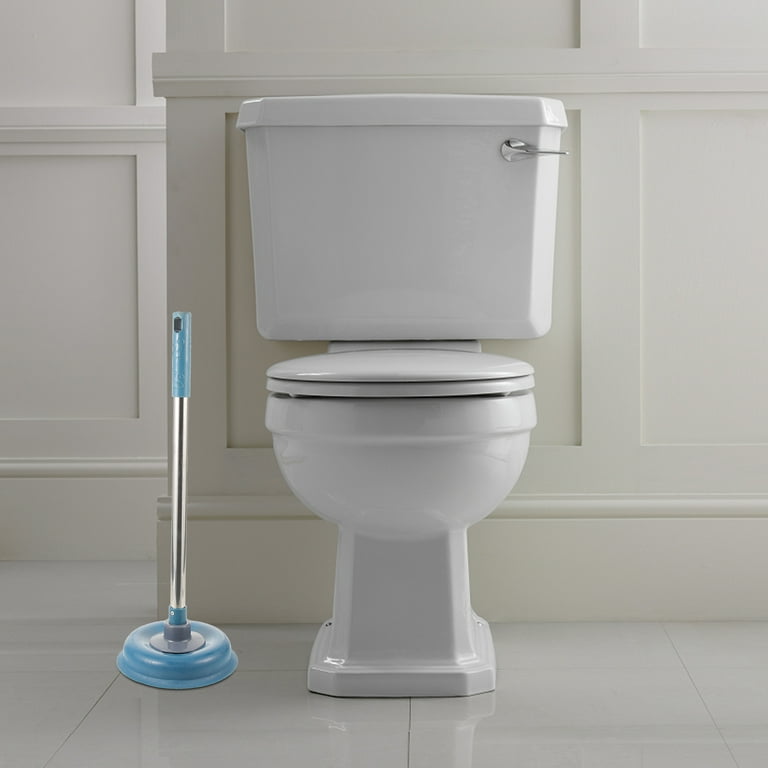We have discovered this great article on How to Unclog Your Sink with a Plunger below on the web and think it made sense to relate it with you on my blog.

Intro
Appropriate maintenance of household drains pipes is crucial for stopping blockages and guaranteeing smooth water circulation. Among the key devices in every house owner's toolkit is the plunger, along with different drain cleansers developed to take on stubborn obstructions successfully. This article discovers how to make use of plungers and drainpipe cleansers efficiently to maintain your drains streaming freely.
Section 1: Recognizing Plungers
Kinds of Plungers
There are numerous types of plungers readily available, each designed for different kinds of drains pipes and clogs. The most typical kinds consist of mug plungers, flange plungers, and accordion plungers.
Exactly How Plungers Job
Bettors work with the concept of creating pressure and suction to displace obstructions. When effectively used over a drainpipe, they create a vacuum that can pull out debris or break up blockages.
Selecting the Right Plunger
Selecting the appropriate plunger depends on the sort of drain and the nature of the obstruction. Mug bettors are optimal for sinks and bathtubs, while flange plungers are much better fit for commodes because of their design.
Typical Mistakes with Bettors
Avoiding these errors ensures efficient plunging: improper seal around the drain, not enough force, and not clearing bordering particles.
Section 2: Utilizing Plungers Properly
Prep work
Before plunging, ensure the bettor covers the drain entirely and develops a tight seal. Clear any type of visible particles around the drain opening.
Method
Beginning with gentle plunging movements to construct suction. Increase pressure progressively, using a constant rhythm. Repeat as required up until the drainpipe gets rid of.
Troubleshooting Tips
If diving does not work, try changing the seal, using oil jelly for a better seal, or utilizing a different kind of bettor.
Area 3: Comprehending Drain Cleansers
Kinds Of Drain Cleansers
Drain cleaners can be chemical or chemical. Chemical cleansers make use of solid chemicals to liquify blockages, while chemical cleansers make use of all-natural enzymes to break down organic matter.
Exactly How Drainpipe Cleansers Work
Chemical cleaners respond with blockages to dissolve them, while chemical cleaners break down organic materials like hair and oil without harming pipes.
Safety Factors to consider
Constantly put on gloves and eye security when utilizing chemical drainpipe cleansers. Make sure adequate ventilation and comply with manufacturer directions thoroughly.
Eco-Friendly Alternatives
Consider making use of vinegar and baking soft drink or enzyme-based cleaners for green choices that are more secure for pipelines and the atmosphere.
Section 4: Using Drainpipe Cleaners Effectively
Application Techniques
Pour chemical cleaners directly right into the drainpipe opening. Enable them to work for the advised time prior to flushing with hot water. Enzymatic cleansers need to rest overnight.
Preventative measures
Avoid mixing different kinds of cleansers, as this can create poisonous fumes. Never ever make use of chemical cleaners along with a plunger, as splashing can occur.
Dealing With Stubborn Clogs
For persistent clogs, consider making use of a pipes serpent or calling an expert plumbing technician to avoid damages to pipes.
Final thought
In conclusion, recognizing just how to use plungers and drainpipe cleaners successfully is necessary for keeping healthy and balanced plumbing systems. By choosing the right tools and methods, home owners can take on small obstructions and prevent major plumbing issues down the line.
How To Properly Use A Plumbing Snake To Clear Drains
When any drain clogs in our home arise, we tend to gravitate toward the plunger and little else. In cases where the plunger and its vacuum-created pressure are not able to clear clogs, many immediately move to harmful chemicals or simply call their plumber to fix the issue.
we’re happy to help with all drain cleaning needs and concerns. This includes informing you on a few other home remedies you may have at your disposal for minor to moderate clogs, one of which is the use of a plumbing snake. Many people have never used one of these before – let’s go over the steps to take when your drain clogs and you have a plumbing snake available.
Attempt Plunger Use
The first step here, as we noted above, should indeed be to grab your plunger when you notice a drain clog and attempt to resolve it this way. If you’re unsure how to use a particular type of plunger, our plumbers can answer any questions you have. If this doesn’t do the trick, however, you move on to the snake.
Locate And Prepare Snake
A plumbing snake is a metal or plastic device that’s generally about a quarter of an inch thick. It’s design with significant extensions, meant to reach down into your clogged drain and push the clog out. Snakes also contain drain augers that will latch onto and push stubborn blockages.
If your plunger doesn’t clear a clog, locate your snake and bring it to the drain in question. We also recommend keeping a bucket nearby to collect the clog once you pull it out, plus we’d advise wearing goggles and possibly protective gloves.
Feed Snake
Once you’re ready to go, feed the snake slowly down the drain, using the crank device it comes with to keep it moving until it finds the clog. Once this happens, much of the clog will be latched onto the coil so you can pull it out, while the rest will simply break up and flow downward.
Detach Debris
Remove the snake slowly from the drain, and once you’ve done so, pick off any debris that’s stuck to the coil. This is another area where wearing gloves is a must.
Flush Drain
Finally, take a few minutes to ensure the snake has done its job correctly. If you’ve been using it on a toilet, flush the toilet a couple times and make sure everything flows well. If you’ve used it on a different drain, flush it with some room temperature water.
https://www.mybuddytheplumber.com/blog/how-to-properly-use-a-plumbing-snake-to-clear-drains/

Application Techniques
Pour chemical cleaners directly right into the drainpipe opening. Enable them to work for the advised time prior to flushing with hot water. Enzymatic cleansers need to rest overnight.
Preventative measures
Avoid mixing different kinds of cleansers, as this can create poisonous fumes. Never ever make use of chemical cleaners along with a plunger, as splashing can occur.
Dealing With Stubborn Clogs
For persistent clogs, consider making use of a pipes serpent or calling an expert plumbing technician to avoid damages to pipes.
Final thought
In conclusion, recognizing just how to use plungers and drainpipe cleaners successfully is necessary for keeping healthy and balanced plumbing systems. By choosing the right tools and methods, home owners can take on small obstructions and prevent major plumbing issues down the line.
How To Properly Use A Plumbing Snake To Clear Drains
When any drain clogs in our home arise, we tend to gravitate toward the plunger and little else. In cases where the plunger and its vacuum-created pressure are not able to clear clogs, many immediately move to harmful chemicals or simply call their plumber to fix the issue.
we’re happy to help with all drain cleaning needs and concerns. This includes informing you on a few other home remedies you may have at your disposal for minor to moderate clogs, one of which is the use of a plumbing snake. Many people have never used one of these before – let’s go over the steps to take when your drain clogs and you have a plumbing snake available.
Attempt Plunger Use
The first step here, as we noted above, should indeed be to grab your plunger when you notice a drain clog and attempt to resolve it this way. If you’re unsure how to use a particular type of plunger, our plumbers can answer any questions you have. If this doesn’t do the trick, however, you move on to the snake.
Locate And Prepare Snake
A plumbing snake is a metal or plastic device that’s generally about a quarter of an inch thick. It’s design with significant extensions, meant to reach down into your clogged drain and push the clog out. Snakes also contain drain augers that will latch onto and push stubborn blockages.
If your plunger doesn’t clear a clog, locate your snake and bring it to the drain in question. We also recommend keeping a bucket nearby to collect the clog once you pull it out, plus we’d advise wearing goggles and possibly protective gloves.
Feed Snake
Once you’re ready to go, feed the snake slowly down the drain, using the crank device it comes with to keep it moving until it finds the clog. Once this happens, much of the clog will be latched onto the coil so you can pull it out, while the rest will simply break up and flow downward.
Detach Debris
Remove the snake slowly from the drain, and once you’ve done so, pick off any debris that’s stuck to the coil. This is another area where wearing gloves is a must.
Flush Drain
Finally, take a few minutes to ensure the snake has done its job correctly. If you’ve been using it on a toilet, flush the toilet a couple times and make sure everything flows well. If you’ve used it on a different drain, flush it with some room temperature water.
https://www.mybuddytheplumber.com/blog/how-to-properly-use-a-plumbing-snake-to-clear-drains/

I discovered that page about A Guide to Plungers (and How to Use Them) when browsing the search engines. You should take the opportunity to promote this blog entry if you appreciated it. I praise you for being here. Come back soon.
Click Here